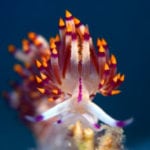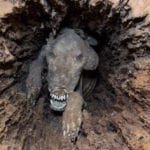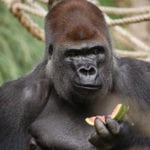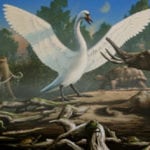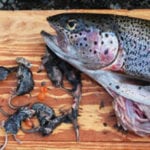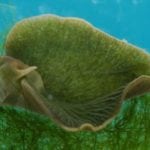 Technology
Technology  Technology
Technology  Humans
Humans 10 Everyday Human Behaviors That Are Actually Survival Instincts
 Animals
Animals 10 Animals That Humiliated and Harmed Historical Leaders
 History
History 10 Most Influential Protests in Modern History
 Creepy
Creepy 10 More Representations of Death from Myth, Legend, and Folktale
 Technology
Technology 10 Scientific Breakthroughs of 2025 That’ll Change Everything
 Our World
Our World 10 Ways Icelandic Culture Makes Other Countries Look Boring
 Misconceptions
Misconceptions 10 Common Misconceptions About the Victorian Era
 Mysteries
Mysteries 10 Strange Unexplained Mysteries of 2025
 Miscellaneous
Miscellaneous 10 of History’s Most Bell-Ringing Finishing Moves
 Technology
Technology Top 10 Everyday Tech Buzzwords That Hide a Darker Past
 Humans
Humans 10 Everyday Human Behaviors That Are Actually Survival Instincts
 Animals
Animals 10 Animals That Humiliated and Harmed Historical Leaders
Who's Behind Listverse?

Jamie Frater
Head Editor
Jamie founded Listverse due to an insatiable desire to share fascinating, obscure, and bizarre facts. He has been a guest speaker on numerous national radio and television stations and is a five time published author.
More About Us History
History 10 Most Influential Protests in Modern History
 Creepy
Creepy 10 More Representations of Death from Myth, Legend, and Folktale
 Technology
Technology 10 Scientific Breakthroughs of 2025 That’ll Change Everything
 Our World
Our World 10 Ways Icelandic Culture Makes Other Countries Look Boring
 Misconceptions
Misconceptions 10 Common Misconceptions About the Victorian Era
 Mysteries
Mysteries 10 Strange Unexplained Mysteries of 2025
 Miscellaneous
Miscellaneous 10 of History’s Most Bell-Ringing Finishing Moves
10 Adorable Animals That Have A Tough Start In Life
As humans, we can either thank our massively oversized brains or our massively undersized pelvic bones for the fact that we are completely vulnerable and useless at birth. But not all animals have the luxury of starting their life with an extended vacation; some extraordinary ones use their amazing abilities to weather the storm. One thing is for sure: they’re safe from any predator that has a soft spot for cuteness.
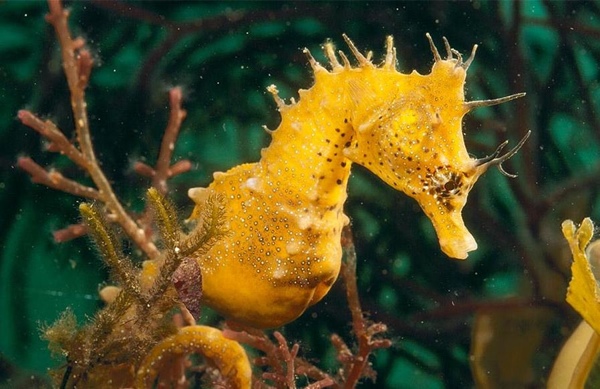
Fewer than five infant seahorses in every 1,000 survive to adulthood, and it’s no wonder. Seahorses don’t have stomachs, and because of this they need to constantly eat. From the moment they are born, they are terrible swimmers that are forced to fill a need for constant food while avoiding their natural predators like crabs, rays, skates and even fellow fish. In addition, they also live in a constant battle against ocean currents that can drag them away from areas rich in the microscopic organisms they eat, as well as storms or pollution that can cause them to swim so hard in protest that they die of exhaustion. To combat these things, baby seahorses will change color to blend into their surroundings and use their special tail to grasp foliage on the ocean floor as a more efficient way of staying in one place than constantly swimming. Now if only humans could find a way to sit around all day constantly eating and still maintain the trim, muscular physique of a seahorse.
Discover the incredible beauty of our world with BBC’s breathtaking miniseries Planet Earth: The Complete BBC Series on Blu-ray at Amazon.com!
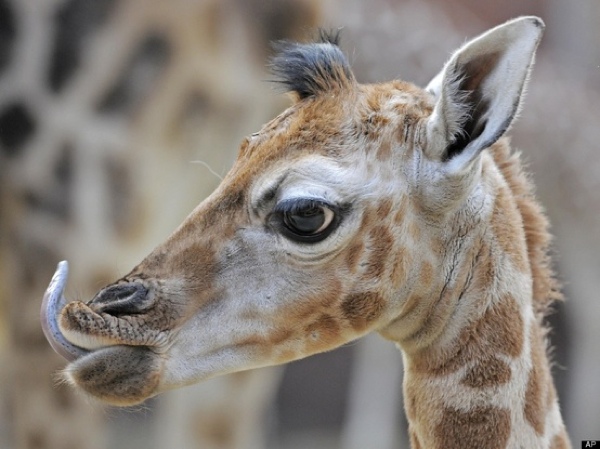
When baby giraffes come into the world, there’s no time to lounge around soaking in the moment. In fact, they begin life with a six foot drop from their exit hole to the hard African savannah. Before they can realize why their bones hurt, their mother is terrified of predators and tries to force them to stand up by kicking and nudging them. After they stand up, they instantly enter some sort of bizarre giraffe boot camp, where their mother repeatedly kicks them over and forces them to stand again, building a valuable skill for survival.
The primary food sources for giraffes are high hanging plants, and because baby giraffes are too small to reach them, they are completely reliant on their mother’s milk for up to twelve months. For the first several weeks of life, they’re forced to hide in areas of tall grass while their mother wanders off in search of food for herself. Then they both meet up with the rest of the herd where the baby giraffes are expected to perform all the duties of an adult giraffe.
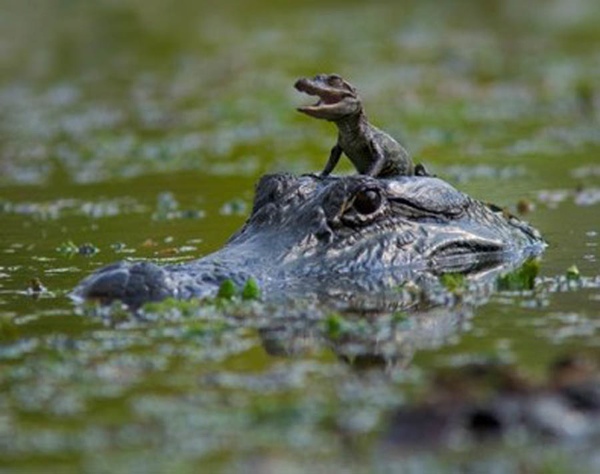
When a baby crocodile is born, it digs out of it’s shell and is buried alive. It makes a strange, loud chirping sound aimed at its mother who stays in close proximity to the eggs so that she can dig them out before they suffocate. Then the mom carries the baby in her mouth to the water, where it instantly needs to swim, hunt, track and evade predators. Hours after birth, baby crocodiles are proficient enough in the water to catch the first meal they consume on planet earth, usually small fish. They emit a special scent that lets their mother to know they belong to her, and unlike most reptiles, the mother protects her young as best she can against fish, birds, dingos or even other crocodiles. But after only a few weeks of frantically looking after her kids, on the verge of a nervous breakdown, she leaves them to fend for themselves. More than fifty percent of crocodiles that survive the trials of birth don’t make it past their first year of life, largely due to croc on croc violence. At least they don’t die at the hands of a guy in khaki shorts filming a television show.
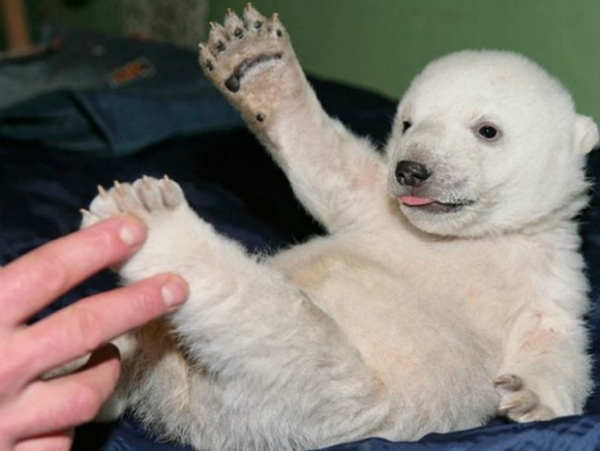
Once impregnated, mother polar bears work diligently to gain at least 450 lbs (200 kg) before winter. This isn’t to hide their unsightly baby bump, they need every pound of it to feed themselves and their two cubs throughout the ruthless winter they spend in a snow den. When polar bear cubs are born they weigh only 17.6 oz (500 grams), and although their den brings them some shelter, their thick coats protect them from temperatures that can reach as low as -20 degrees Fahrenheit (-29 degrees celsius). For the first few months, they live off their mother’s milk in the safety of their den, but then they emerge into a seemingly endless wasteland of snow and ice. If they manage to survive the harsh temperature and winds and constant threat of arctic foxes looking for a defenseless meal, they have to worry about starvation. Their mother has a limited supply of fat reserves, and seals are nowhere near as abundant as polar bears probably would hope. In recent years, with the recession of the ice caps resulting in fewer feasible places to hunt, cubs not only have to worry about the lack of calories, but also the possibility that their mother will eat them as a last ditch effort to survive. With their amazing skills, most survive beyond the first year of life and become an absolutely adorable merciless killing machine.
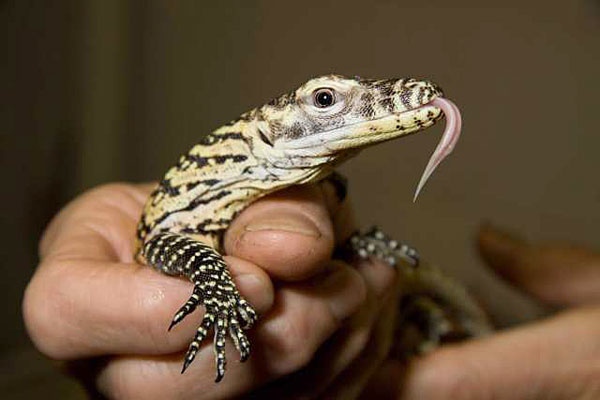
Komodo dragons only live on a few islands in Indonesia where they’re born into a world where almost everything is a predator and they’re forced to hide for years. Komodo mothers abandon their eggs and usually bury them in the side of a hill or the abandoned nest of an orange-footed scrub foul. The hatching process of komodo dragons takes hours and tends to exhaust the babies to the point that they lay in their broken shells for hours gathering strength before tunneling out of the nest. Once out of the nest, they’re faced with an almost endless number of predators of all types from every direction including birds, snakes, cats and even other lizards. They’re essentially defenseless at birth, so they climb the nearest tree and stay in it for up to three years, eating the insects and birds that choose to live within the tree. They aren’t fully grown when they descend from their tree, and getting food often means scavenging what’s left of an animal killed by a larger komodo dragon, who often times will eat them. To prevent this, they roll around in their own feces and the intestines of dead animals as a creative way to make the fellow komodo think that he is diseased and unsafe to eat.
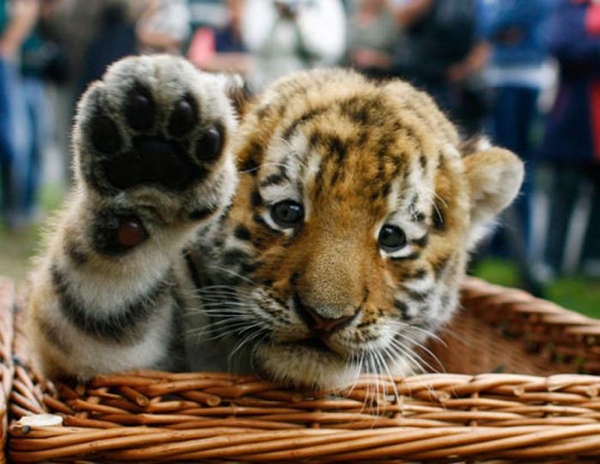
Tiger cubs are born blind and defenseless. Despite this fact, their mother searches far and wide for the perfect place to raise their young, and for some reason, almost always settles on a location with tons of jagged rocky crevices around. To stay safe, they must use their excellent sense of smell to always stay in close proximity to their mother, but their problems don’t end there. They live in a constant hierarchical battle, the result of which determines the level of nutrients they receive. Tiger cubs love to play, and throughout the first few months of their life, one cub will begin to assert his dominance over the other cubs. The mother returns with a kill to feed the litter and actually favors feeding the dominant cub over the rest. As if that weren’t enough, a wandering male tiger will occasionally kill a litter of cubs in an attempt to make their mother more receptive to mating. The good news is, tigers only have one predator other than themselves. What is the only animal stupid enough to mess with the ferocity and conviction of a female tiger defending her young? Humans.
Learn more about nature’s stripiest murder machines with Tigers: Amazing Pictures & Fun Facts at Amazon.com!
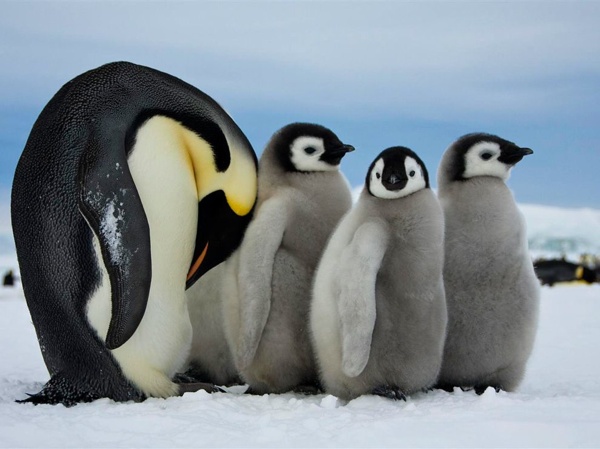
Emperor Penguins are featherless when they hatch into the brood pouches of their fathers and are instantly subjected to grueling Antarctic winds, -40 degree temperatures, and widespread starvation. Once hatched, they have two delicious possibilities for their first meal. If their mother hasn’t returned from her fifty mile journey to the coastal feeding grounds, the father feeds it a curd-like substance composed of fifty-nine percent protein and twenty-eight percent lipid, which is produced by a gland in his esophagus. If she has returned, she regurgitates partially digested fish that she’s been storing in her stomach for weeks. It may not be glamorous, but the nutrients provided allow them to grow fifteen feathers per square centimeter—feathers that keep them warm once outside the pouch. If they survive the ruthless conditions, after forty-five days the baby penguins are too big to fit inside their respective pouches, so they form a crèche—a group densely packed together for warmth and protection. After two months of this, they begin to think there’s more to life than standing around in the blistering cold and they make their way to the ocean, where they hunt, and fish.
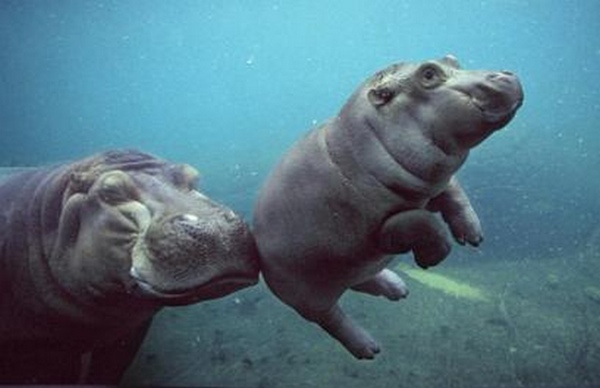
Baby hippos are born underwater, unable to breathe. Their mother quickly dives underwater and uses her nose to push the baby up toward the surface where it can take its first breath. Hippos instantly have to become proficient swimmers. In fact, if a baby hippo wants to eat, it has to hold its breath and swim underwater to drink its mother’s milk. If the water becomes too deep for the baby hippo, it climbs on top of its mother’s back and rests. Living in Africa, baby hippos have many natural predators like lions, leopards, and crocodiles, but the mother hippo usually defends against them pretty well. The biggest killer of baby hippos is dehydration. They can’t stay out of the water very long, and they don’t have sweat glands. Their only defense is to secrete a thick, red substance from their pores called “blood sweat” because it appears as if the animal is sweating blood. In actuality, it contains hipposudoric acid and norhipposudoric acid—two pigments that inhibit the growth of disease-causing bacteria and have a light-absorption effect that acts as a sunscreen.
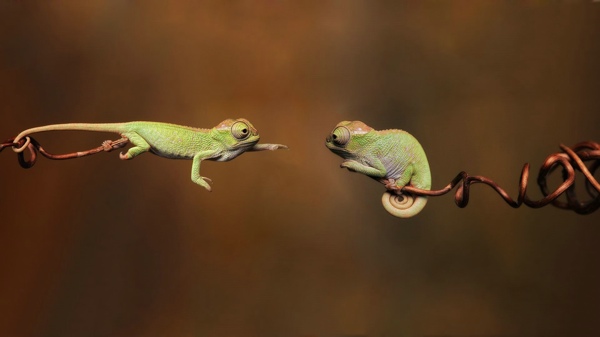
After five to seven months of incubation, chameleons hatch themselves. Their mother and father abandon the eggs before they hatch, so the newborns must rely on their inherent special abilities to find food, shelter and safety from predators. Chameleon babies are passive creatures that sit idly, waiting for insects to come their direction, and then use their extraordinary tongues to capture them. Throughout a chameleon’s life, its tongue will often be longer than the rest of its entire body, and it fully extends with pin-point accuracy in 30 thousandths of a second. To locate both predators and prey, it uses its unusual eyes with fused eyelids that move completely independently. A baby chameleon can focus on two objects at once and has a range of vision of almost 360 degrees. Lastly, it has an incredible ability to lure in prey with a false sense of security by changing colors or camouflaging itself; however, the main purpose of this ability is to communicate with other lizards, whether it be warding off rivals, or attracting females.
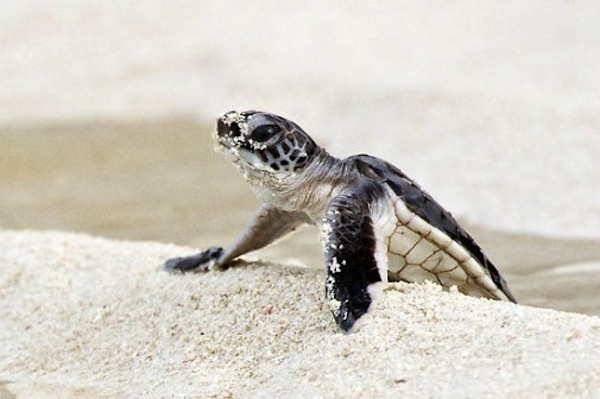
Once sea turtles reach a certain age, life is pretty great. They surf the warm ocean currents, snorkel around the coral reefs looking for jellyfish, and if they’re feeling antisocial, they can hide inside their strong camouflaged shells and pretend to be rocks. Unfortunately, only one in a thousand reach their sea turtle bar mitzvahs because of the harrowing sequence of events they’re faced with at birth. Sea turtles are born without mothers. Two months before they hatch, their mother finds a beach, digs a circular hole twenty inches deep, and deposits about 200 soft-shell eggs for incubation. In an attempt to prevent predators from finding the smorgasbord of eggs, she refills the hole, smooths out the sand on top to conceal the location, and for good measure, nonchalantly whistles as she makes her way back to the ocean.
Once they hatch, the baby sea turtles dig toward the surface until they see enough light to determine whether it is night or day. Then, usually when it’s dark, they erupt out of the hole and make a mad dash for the ocean, through the worst obstacle course ever constructed. They run for their lives dodging driftwood, seaweed, and crabs while also being attacked by birds, raccoons, and cats seeking an easy meal. If the turtles are lucky enough to reach the ocean, they swim as hard as they can, fighting riptides and waves to make it to the ocean current, where they enter what turtle experts deem “the lost years”. This is the ten-year period where youth renders them incapable of doing normal turtle duties; they’re carried along relentlessly, constantly avoiding deadly tangles of seaweed and predators that hang around the current for food, as though it were a massive conveyor belt sushi bar.
For hilarious 130 character BS, follow Stephen West on Twitter.
